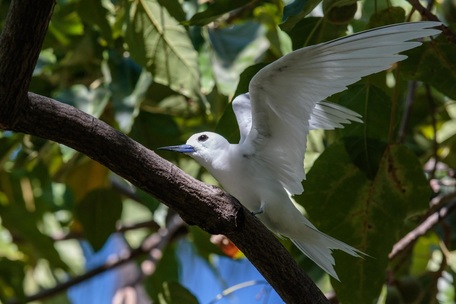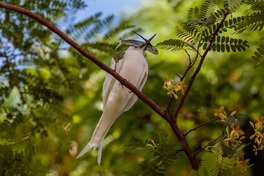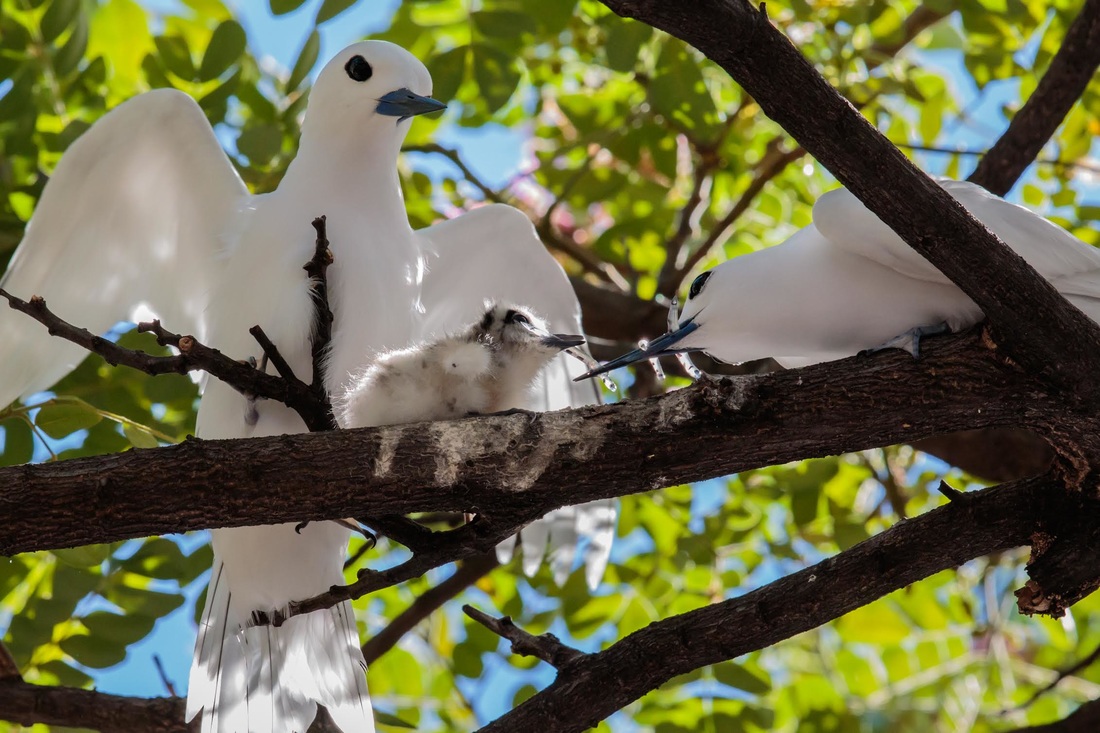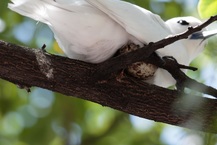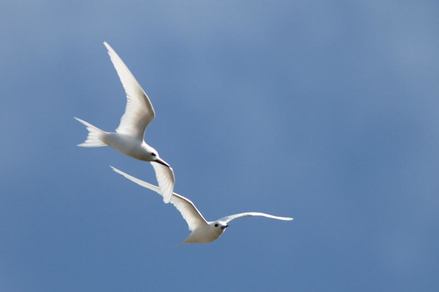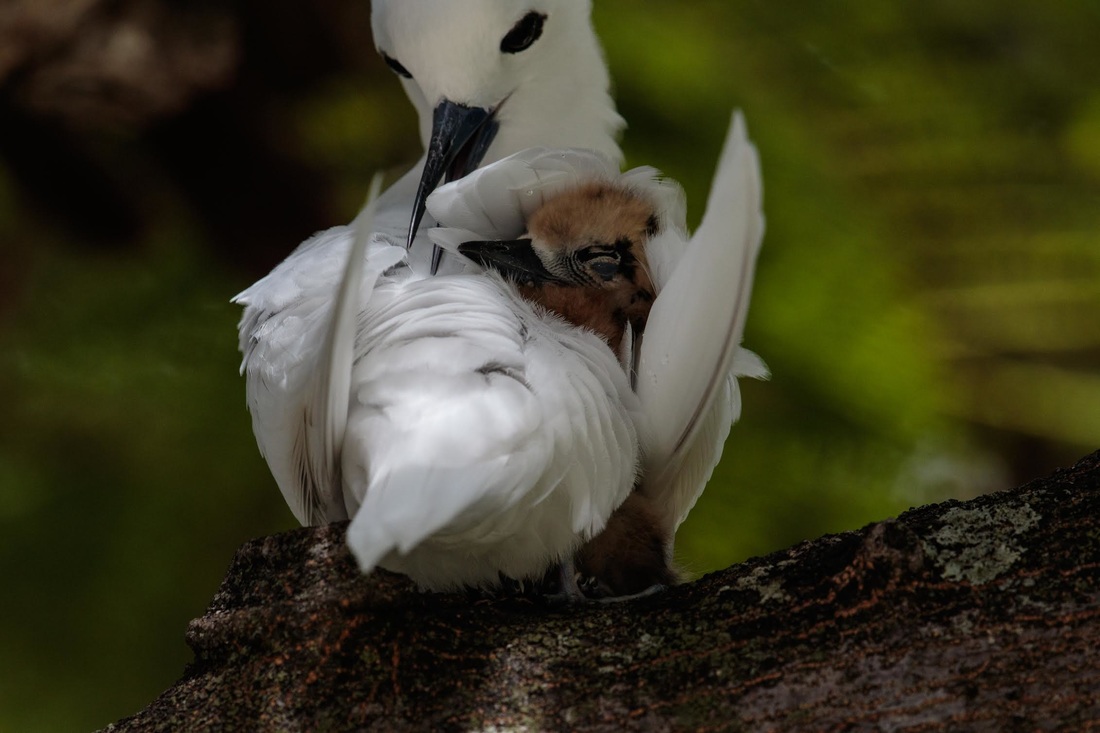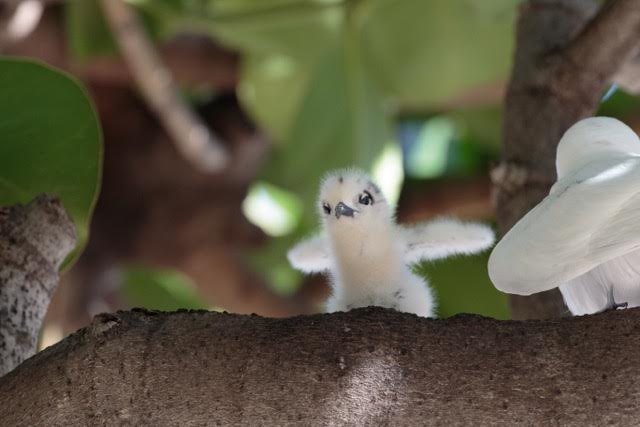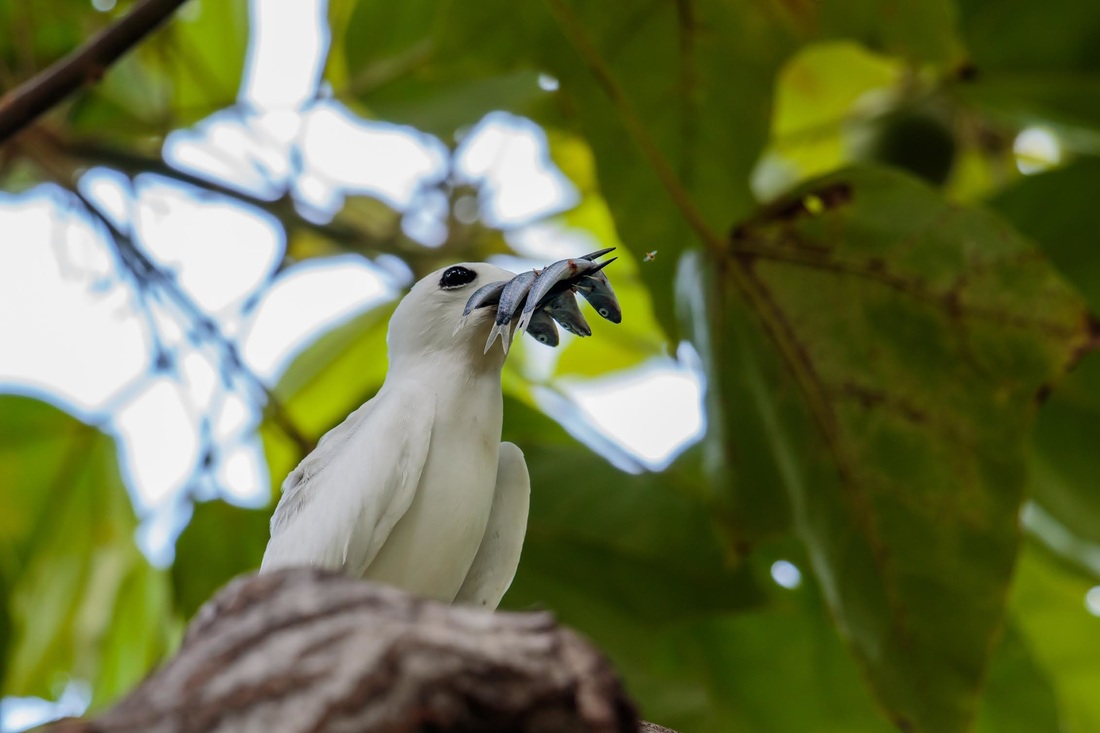What is a manu-o-Kū?
Manu-o-Kū (Gygis alba) is a native Hawaiian seabird found throughout many tropical and subtropical areas in the Pacific, Southern Atlantic and Indian Oceans. You may know them by one of their many common names: White Tern, Fairy Tern, Angel Tern or White Noddy.
